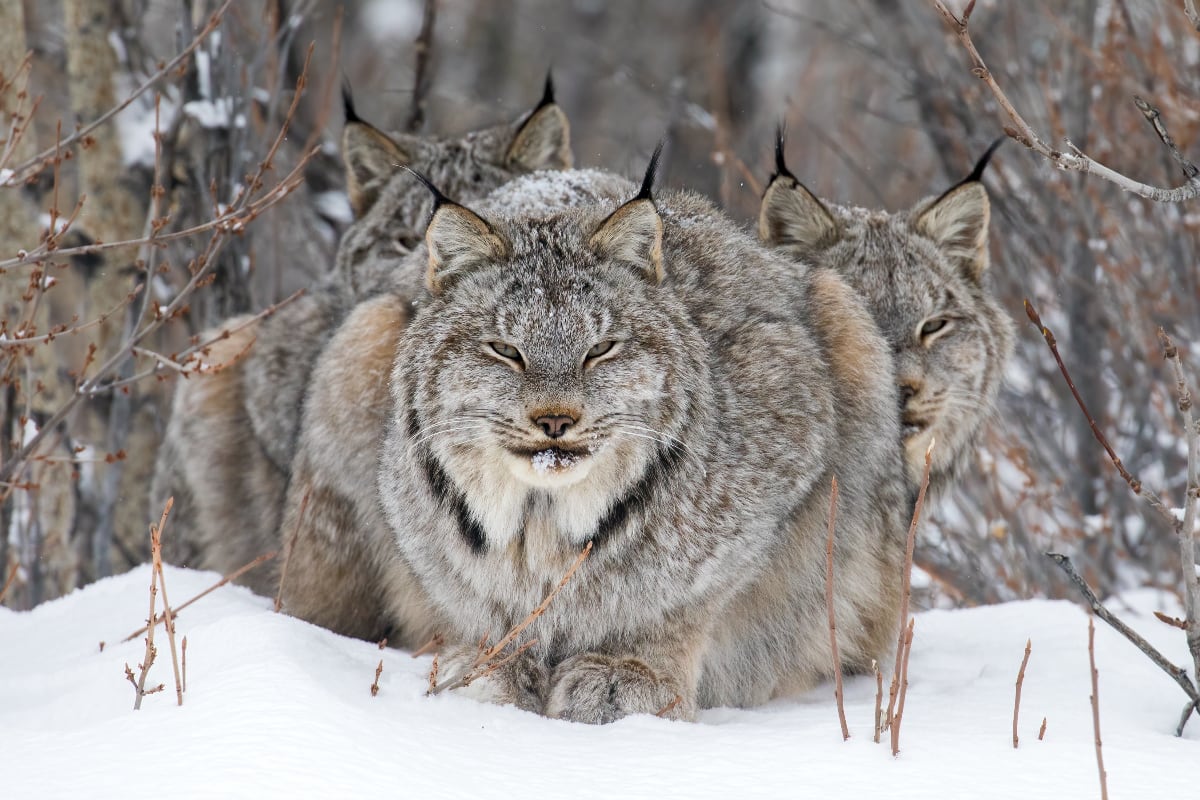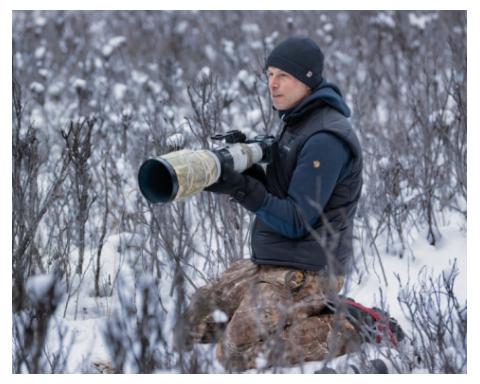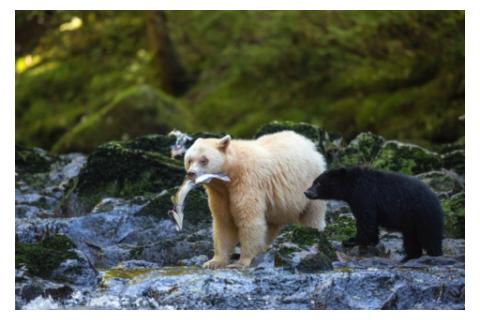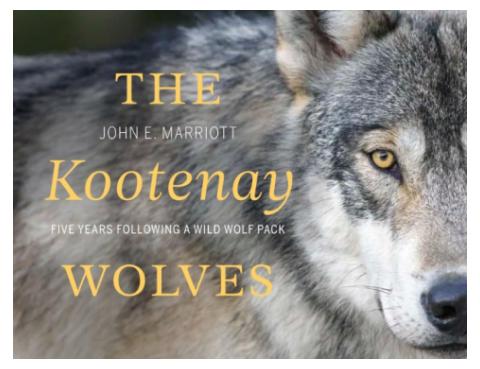
Modernization
Learn more about government’s intention to modernize the museum to protect our historic holdings and provide better access to our collections.

By Laura Goldstein
Photos: John E. Marriott

At first he couldn’t see them. Blinding snow and a wind chill factor of -30 degrees Celsius, whipped up the icy visibility. Wearing snowshoes, conservation photographer, John E. Marriott tracked their paw prints for twelve days through dense Yukon forests.
For his photograph ‘On Watch’ of a mother lynx sheltering her young from the elements, the Canmore, Alberta -based photographer was awarded Winner, Animal Portraits in the 2024 prestigious Wildlife Photographer of the Year from London, England’s Natural History Museum. In celebration of the Museum’s 60th Anniversary, their captivating travelling Exhibition of 100 wildlife photographs by Canadian and international photographers, arrives at the Royal BC Museum, Victoria from February 14 to April 27, 2025.
“I’ve actually been nominated three times: in 2013, 2021 and then 2024 and my first pick of photos were of bears and wolves,” John laughs. His third time submission was obviously the charm, as he won the highly competitive Animal Portraits category. Entrants could enter 25 photos in 16 categories and a record-breaking 59,228 photographs from 117 countries were submitted in total. John was flown to London to receive the sculpted blue whale award by British artist, Nick Mackman. Its commissioned design was based upon the spectacular 83-foot blue whale skeleton suspended from the ceiling at Hintze Hall in the Natural History Museum.
What makes the photograph so fascinating is an optical illusion: ‘On Watch’ entices the viewer to look deeply into the photograph. Camouflaged by the surrounding scenery and deep snow, it’s only upon multiple inspections that the viewer is startled to see that there are three lynx not two. Competition judge, Roz Kidman Cox said “...To have gotten so close to such an elusive, wary cat - widely trapped for its fur, is rare but to have portrayed the whole family is extraordinary!”

“When I spoke to the judges at the awards ceremony in London, they said that one of the things that put my photo ahead of the other awesome photos is that they kept having to stare at it,” John confides. And, like a Robert Bateman painting, John’s photograph is so exquisitely detailed you can see the snow clinging to the mother lynx’s mouth and whiskers.
For his award-winning photograph ‘On Watch’ John describes his tactics: “I approached very slowly to about 40 metres from the family, took a series of pictures for five to 10 minutes, then slowly backed away and waited until the family decided to move again, which was about 45 minutes later. “There was no hide or bait or calling involved, it was all natural, like all of my photography.”
Tracking wild animals on foot can always incur risks. “I take my safety very seriously,” John assures, “and always carry a knife, lighter, first aid and a Garmin inReach Explorer that uses satellite SOS communication when I head out to back country.”
It’s amazing to learn that seven Canadian wildlife photographers either won or received commendations from the judges in the 2024 competition.
“I don’t have specific stats but I bet per capita that Canada has more wildlife photographers than any other country with our winter climate that extends to even urban areas,” John explains. “Also, when I started giving wildlife photography tours in 2015, they were all men. Now there are probably more women than men photographers,” he adds.

An Associate Fellow with the International League of Conservation Photographers, a Canon Ambassador and co-founder of the Exposed Wildlife Conservancy, the latter an environment non-profit, John has published eight stunning coffee-table books. In the past, he has concentrated on photographing bears - from the much maligned grizzly, to the mysterious reclusive white Spirit Bear, polar bear and black bear. The behaviours of wild wolves have also captured his imagination but photographing the big cats like the lynx is a relatively newer passion.
He conducts photographic tours and workshops throughout Canada and North America working with experienced companies specializing in the Great Bear Rain Forest, BC and in the Arctic. John is planning an expedition to Patagonia to photograph pumas in 2025.